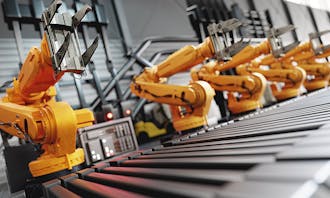How small manufacturers can implement digital technologies
2022-04-13
3 min read
Industry 4.0 in manufacturing is commonly known for its push towards more automation and digital technology applications.
The UK government reports from 2017 show that greater digitalization could add 455 billion pounds to the UK economy. Because of this, it should not come as a surprise that businesses are attempting to make these changes. However, the high starting price of a smart factory prevents many smaller enterprises from competing with their larger competitors.
Benefits of Industry Digitalization
Manufacturers who take part in the process of digitalizing the industry stand to gain great benefits as a result. It is possible for it to result in an increase in earnings for an organisation. This approach also has the potential to result in a boost in productivity of up to 25 percent. These are two extremely positive outcomes.
Risks of Industry Digitalization
However, this revolutionary change is difficult for smaller enterprises to achieve. This is because of the cost, risk, complexity, and a lack of necessary digital skills. So, how can small manufacturing companies keep up with the competition?
Many businesses have been feeling the strain of the COVID-19 pandemic and the economic fragility over the past couple of years. From this, it is clear that those who can adapt quickly to changes are the ones with tools that are flexible to change. Digital tools can offer this flexibility.
There are many different tips available for small manufacturers looking for ways to tackle these challenges. This could just mean starting small and focusing on the small changes the business can make. Which, is an alternative to the large, expensive, and burdensome initiatives that can take years to turn a profit.
The Automata six-axis cobot arm, for instance, is a relatively inexpensive option for businesses at just £5,000. Adding sensors to older machinery can also help to cut costs down when done in a retrofitting manner. It's possible that implementing a number of minor digital changes will have the same impact as making one large change. Yet, they lack the hassles of larger projects, such as integration issues, added training, and extra maintenance.
Other ways companies can lessen the challenges of digitalisation are by empowering their employees. The old management model of command and control has become obsolete. Instead, successful organisations utilise a hybrid model that combines top-down management with bottom-up feedback.
Employers are now giving authority to the employees who are closest to the problem to create solutions. This is rather than going up the chain of command to find an answer to an issue. Additionally, they are encouraging them to come up with fresh concepts that complement the executive leadership's overall mission. This can help enhance employee morale, increase production, and relieve some of the pressure that managers are under.

Digital Manufacturing on a shoestring
These suggestions are not the only means by which manufacturers might digitalize their operations. Professor Duncan McFarlane of the University of Cambridge founded a programme at Cambridge’s Institute for Manufacturing. The Professor aimed this course at educating small businesses on digital technologies for manufacturing. Since then, McFarlane has come up with the name "Digital Manufacturing on a Shoestring" for this particular scheme.
It is said that digital manufacturing on a shoestring is a low-risk, low-cost approach to digital solutions. McFarlane and his colleagues conducted a review of low-cost technologies and grouped them. After doing this, they placed each one into one of 59 different digital solution areas. These areas may be reused, changed, and merged to develop this programme.
Some of the solutions in this programme include consumer-grade microcomputers, like the Raspberry Pi in manufacturing, and low-cost sensors. These low-cost alternatives can be housed in a casing that is suitable for industrial use. As a result, this provides an economical means of shielding them from the conditions of the factory.
Because of this project, fourteen business partners in the industry have successfully begun or finished a pilot with a Shoestring solution. These individuals have also provided feedback that is of an extremely positive.
Although industrial digitalisation may be difficult for small businesses to implement, it is not impossible to do so. It is time for all industrial organisations to make the transition into Industry 4.0. Especially, now that there are helpful tips available and options that are more cost-effective
To keep up to date with the latest news impacting the manufacturing industry, visit the EU Automation Knowledge Hub.



